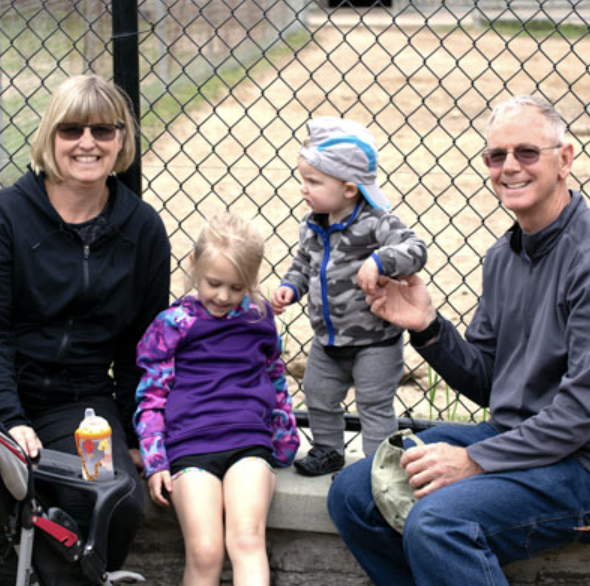

For the last year, college junior Joshua Lee has been trying his hand at a variety of zookeeping jobs at Como, from caring for the zebras in the hoofstock building, to climbing in with the penguins to take a crack at cleaning the rock work.
“That’s not easy,” Lee admits. “When the penguins are nesting, they’re very protective of their space.”
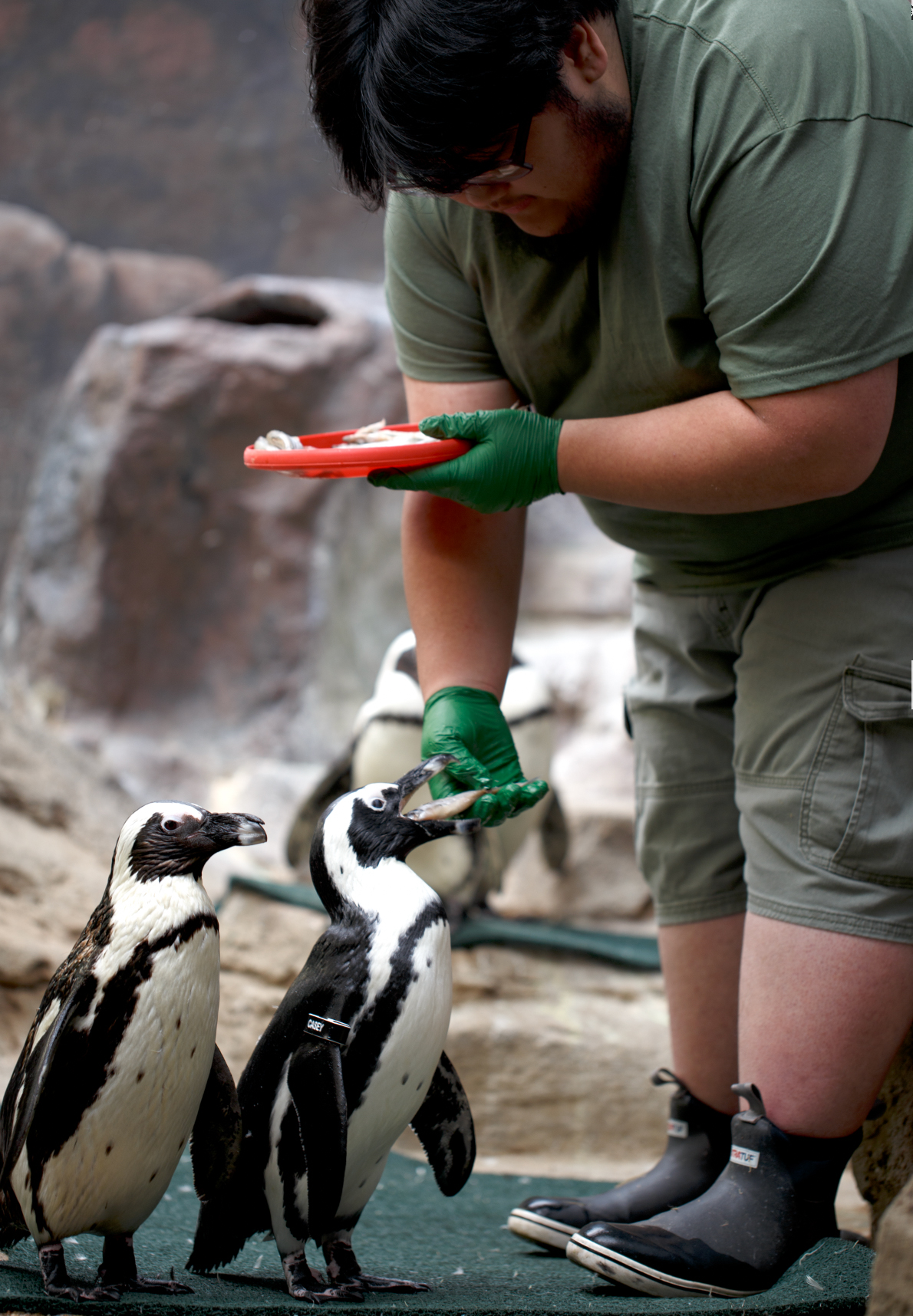
As Lee returns to college for his senior year, he says his experience at Como has given him many new options to consider. “I still don’t know what I will want to do after I graduate, but what I liked about zookeeping was that every day was a different day, and I had a chance to work with so many different animals,” he says.
A zoology major at Minnesota State University, Mankato, Lee is curious about the career paths available to him in animal care. Getting the chance to see the inner workings at a zoo has historically required signing on as a volunteer or an unpaid intern—a traditional career path that can be a major barrier to young people who can’t afford to take time away from paid employment. But over the last year, Lee has been earning money and learning about his future options as part of Como Park Zoo & Conservatory’s new paid apprentice program through the City of St. Paul’s Right Track program.
Mayor Melvin Carter’s youth employment initiative, Right Track engages nearly 1,000 young people from cost-burdened homes throughout Saint Paul in a variety of internships. Launched in 2014 through a partnership between the City of Saint Paul, the Saint Paul Public Schools and the Saint Paul Area Chamber of Commerce, the program’s goal is to establish a pipeline of career development opportunities for Saint Paul youth.
Como’s campus managers helped launch the program at Como in 2022, but the program has been in the works for several years, creating a new, fully paid pipeline for young people who are interested in zookeeping and animal management careers. “The program is also designed to ensure that youth don’t have to work multiple jobs to take advantage of an internship opportunity,” says Lianna Sanders, the Como project manager who oversees the Right Track apprentices. “During the school year, they work 20 hours a week, and during the summer months it’s a full-time job for these apprentices, who also take part in professional development training that’s part of the program.”
Right Track operates out of the City of Saint Paul Department of Parks and Recreation, building on the department’s long history of providing youth development and employment opportunities for Saint Paul youth. While Right Track apprentices at Como are paid minimum wage, a partnership with Como Friends also helps to pay for the gear that apprentices need to be successful on the job, like uniforms and sturdy boots.
“Como’s audience is incredibly diverse, and it’s important to be recruiting a workforce that reflects the surrounding community,” says Como Friends president Jackie Sticha. This summer, Como will say goodbye to Joshua who completed the program this year and Gil and Gabby will stay on and continue with their work here as Como welcomes additional Right Track apprentices for roles in both animal and plant care at Como Zoo and the Marjorie McNeely Conservatory.
As Lee returns to college for his senior year, he says his experience at Como has given him many new options to consider. “I still don’t know what I will want to do after I graduate, but what I liked about zookeeping was that every day was a different day, and I had a chance to work with so many different animals,” he says.
To learn more about the Right Track program, visit here.
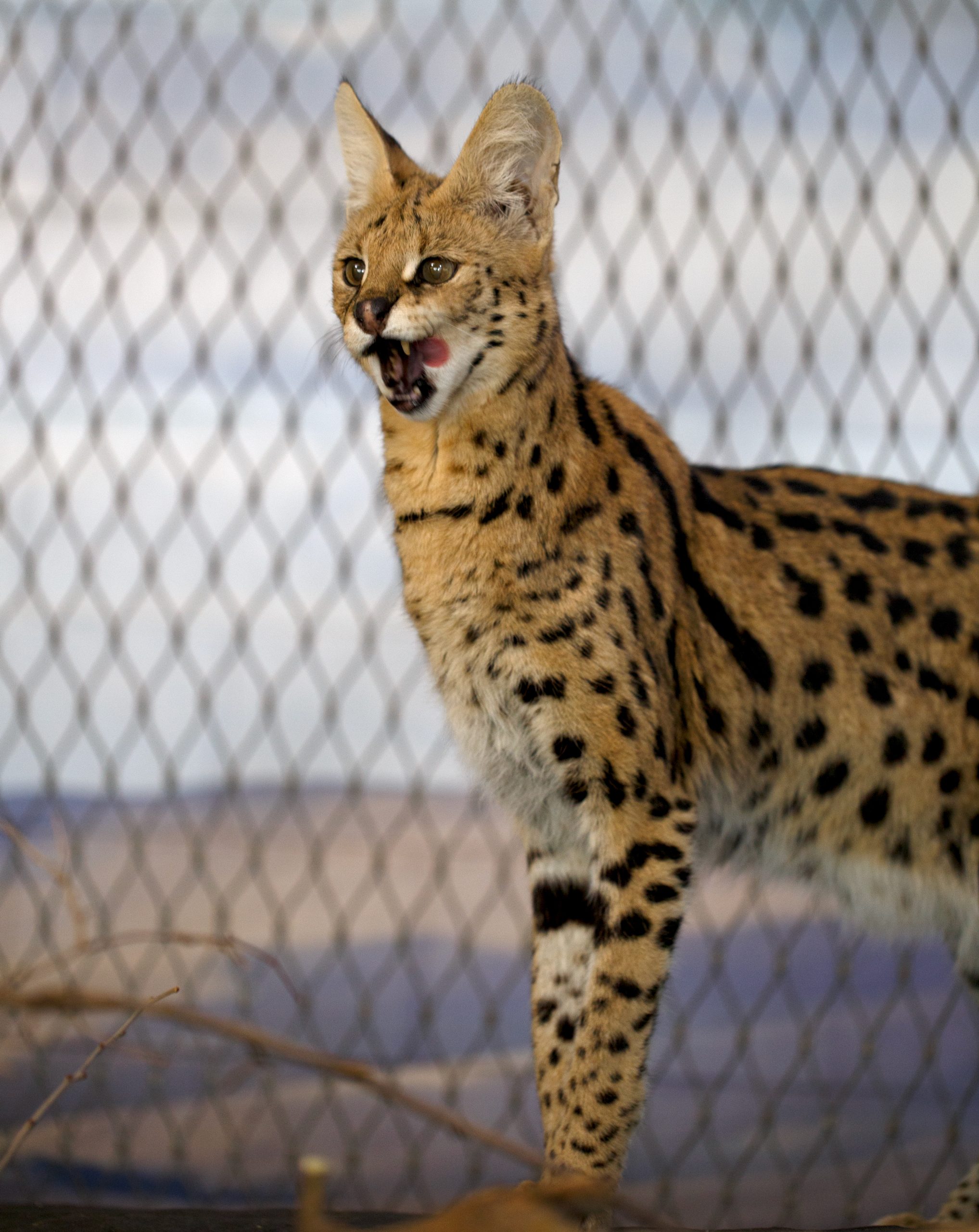
Humans aren’t the only species that seem to get a spring in their step when the weather turns warm. Jill Erzar, a senior zookeeper at Como Zoo, believes animals anticipate spring just as we do.
“It seems like animals are always a little more excited this time of year,” she says. “The ice has thawed, there are new smells in their habitats, and of course, many more visitors.”
On your next visit to Como, you may notice some changes, as zookeepers take advantage of the spring weather to welcome new animals, say goodbye to old friends, and provide best practice veterinary care to animals. Here’s a look:
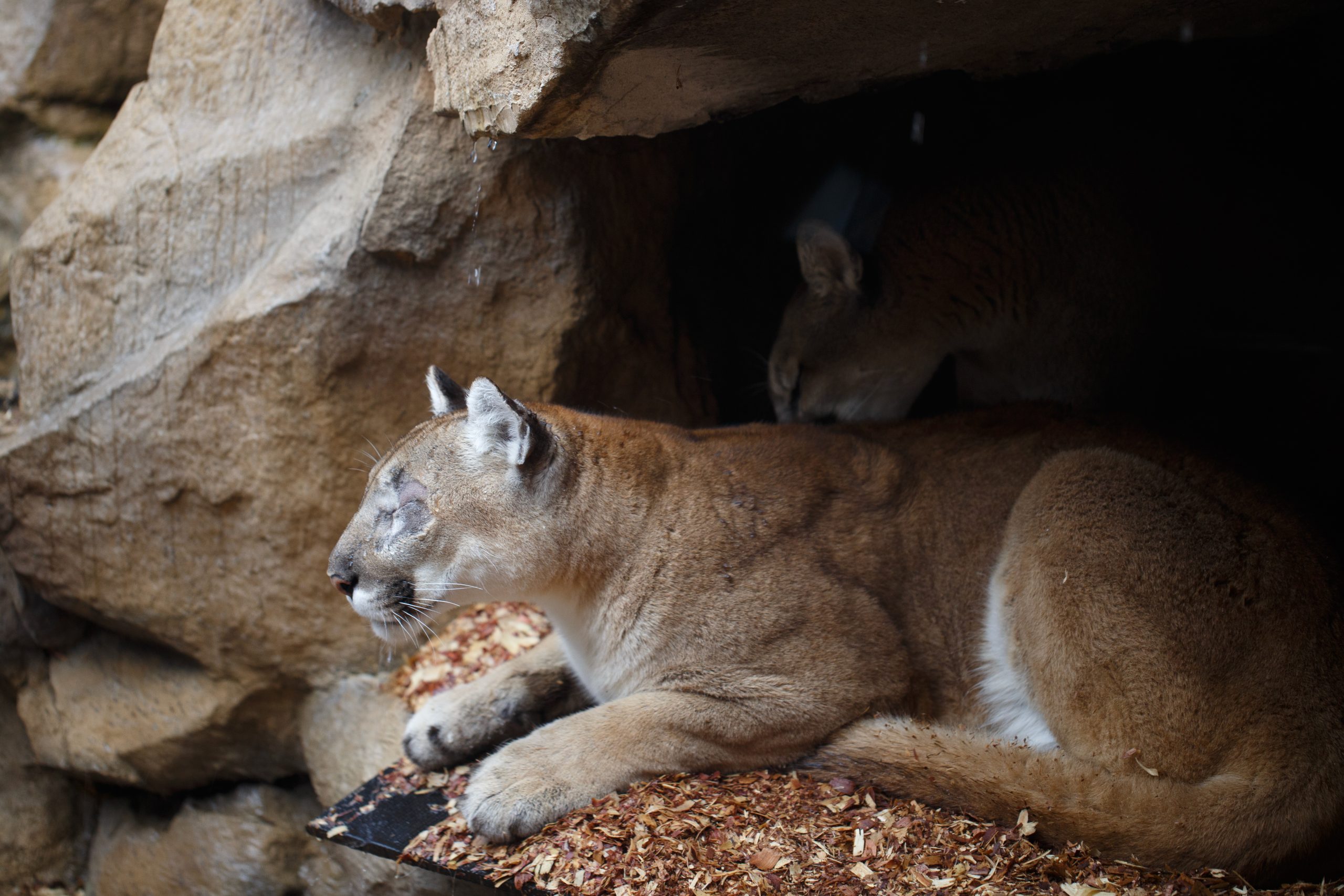
Though he’s blind, 4-year-old Jasper the cougar has no problem navigating his habitat at Como Zoo. But when complications from progressive retinal atrophy were causing additional health problems and discomfort for the young animal, zookeepers made the difficult decision, in partnership with veterinarians, to remove his nonfunctioning eyes during a successful surgery you may have heard about here at MPRNews and here at FOX9. Now back in his habitat, Erzar says, “Jasper may be more cautious at this point moving around, but his activity will likely appear normal since he was unseeing prior to the surgery and was accustomed to his habitat.”
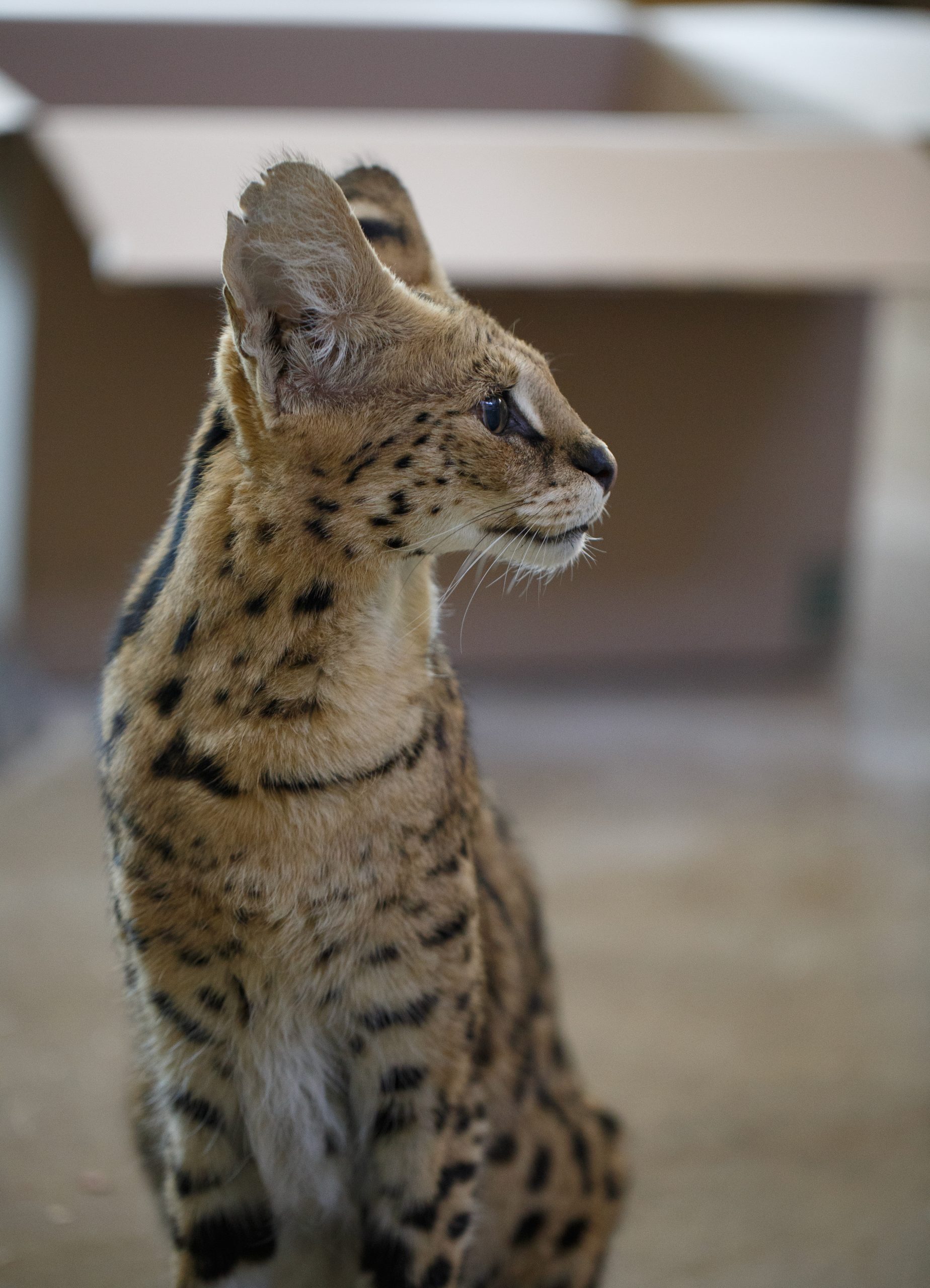
There’s another new face in the large cat building—Lily, a 19-year-old serval. A long-time resident of Bismarck’s Dakota Zoo, Lily moved to Como in March where she will live out her golden years. “We had the space and the capabilities to give her a quiet retirement home while sharing her story with our visitors,” says Erzar. “At 19, she’s at the top of the age range for her species,” but keepers report she’s thriving in her new habitat.
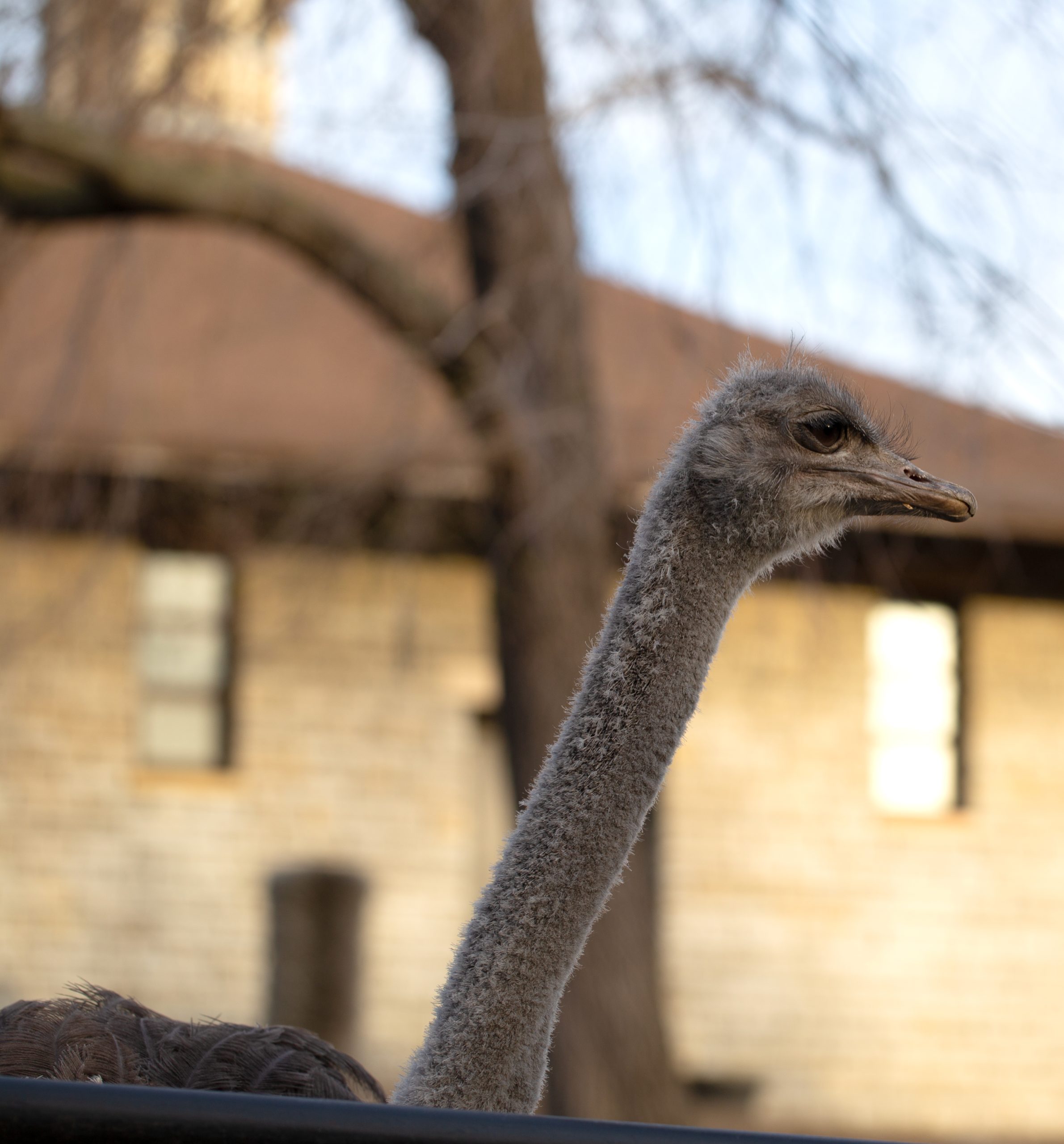
Como’s Old Barn has historically been the home of cold-weather animals like bison and Arctic fox. But this summer, two new ostriches will take over the space previously occupied by Forest the reindeer, who has joined a herd of male reindeers at the Minnesota Zoo. The young ostriches, both hatched last August, will eventually join Pickles the ostrich, who shares a habitat with Como’s giraffe herd at the African Hoofstock building.
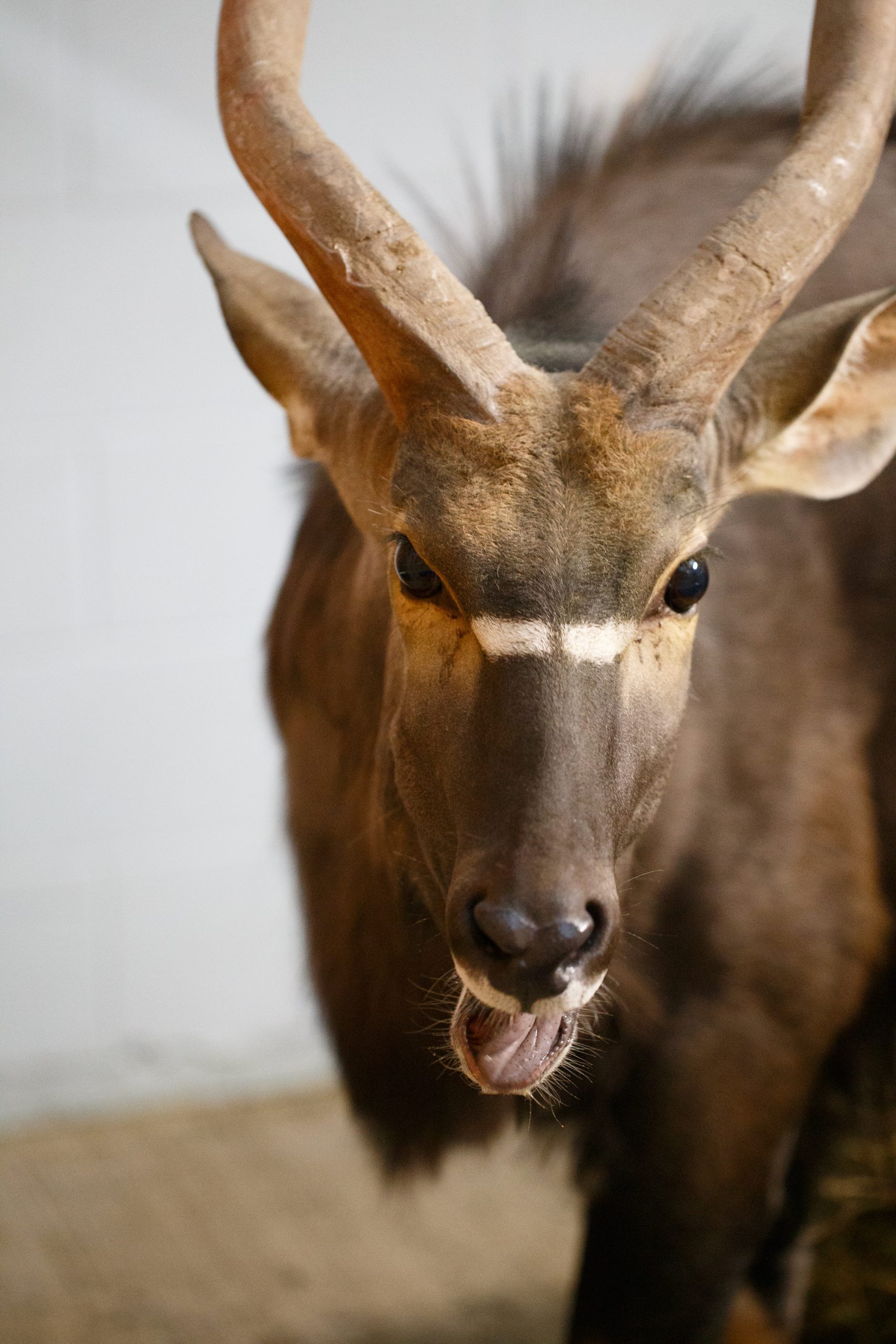
While Como Zoo has had years of success breeding lesser kudu, Minnesota’s long, cold winters have never been the ideal climate for these African antelopes. “Lesser kudu are wonderful animals, but they’re freeze babies, and they don’t like to be outdoors when temps drop below about 55 degrees,” says Erzar. “They’re also very nervous animals, and though we’re a small zoo, we have a very large visitor base that’s not ideal for them.” To promote their welfare, Como’s lesser kudu have moved to warmer climes, while a breeding pair of nyala are moving in. Another breed of African antelope, but with long flowing hair, Erzar says, “they’re known for being more cold tolerant and less stressed by human interaction.” Look for male Stanley to make his Como debut within the next week, while female Stevie will join him later this summer.
Outstanding veterinary care can prolong the lives of animals like Daisy the giraffe. But for Como Zoo keepers, humane animal care can also make for heartbreaking decisions.
With more than a thousand animals of 215 different species in Como’s care, death is part of the natural life cycle at Como Zoo. Even so, recent months have felt especially challenging, as Como Zoo said goodbye to two iconic animals well known to and beloved by the public.
Last week, keepers made the difficult decision to humanely euthanize Daisy, a 23-year-old reticulated giraffe, who had been suffering from severe degenerative arthritis. A few months earlier, Como lost another beloved animal ambassador, 46-year-old orangutan Amanda, who was diagnosed with an inoperable abdominal mass that was causing chronic damage to her kidneys.
“Daisy was a strong, beautiful matriarch – quick to judge and slow to accept her human coworkers,” says Como Zoo senior keeper Jill Erzar. “She was a fierce and protective mother who would do anything to keep her calves safe. She was an extraordinary ambassador for giraffe, helping us connect visitors to her wild counterparts by telling her story.”
A fixture at Como Zoo, famous for her art work and her flair with textiles, Amanda the orangutan, who died at 46, was the quintessential animal ambassador, a gregarious great ape who helped to personalize nature while inspiring visitors to protect it.
Losses like this are hard on the whole zookeeping staff, says Erzar. “But being transparent about these events is an important way to tell the public about how much effort goes into life and death decisions about animal care,” she says, noting that there’s an even longer list of Como Zoo animals whose lives were saved or improved by major interventions over the last year. Below is a look at a few of them:
Dental Surgery for Tsar: A few years ago, Tsar the tiger went into cardiac arrest during a root canal and nearly died. “Dr. Fausto Bellezzo, our veterinarian at the University of Minnesota, jumped on him and did the most heroic CPR to bring him back,” says Erzar. “But we were very hesitant to immobilize him again.” When it became clear Tsar needed the procedure again in October, Como consulted with a team of tiger experts to help minimize the high risks of putting large cats under anesthesia, preparing for “every possible scenario we could imagine,” says Erzar. With 17 keepers and specialists assembled, this year’s procedure went “like clockwork,” and the 9-year-old tiger is back on the prowl.
Hormone Therapy for Forest: When they’re growing, reindeer antlers are covered in a complex vascular network called “velvet” that sheds as the antler hardens. But without the usual surge of male hormones required to boost the process, Forest’s antlers bled extensively, causing the castrated reindeer to collapse on exhibit last year. “Como vet tech Andrea Persson raced in and got a tourniquet on him right way,” says Erzar. This year, keepers found a much simpler solution—a short-term hormone implant that’s helped the reindeer develop and drop his antlers according to schedule.
Cataract Surgery for Gomez: One of the longest-lived spider monkeys at Como, 31-year-old Gomez was also one of its most recognizable, coming directly up the bay window of his habitat and shading his eyes to get a better look at visitors. “For decades, he had cataracts that were infringing on his vision, and that was his unique way of dealing with light sensitivity,” explains primate keeper Em Brunmeier. In March, Gomez had successful cataract surgery that will allow him to see well into his golden years. “We still see him shade his eyes at times, but it’s more of a reflex or a little salute at this point,” says Brunmeier.
Helping Jasper Navigate: Orphaned in the wild and brought to Como Zoo in 2018, mountain lions Jasper and Ruby have always stayed close together, and this year, a medical exam may have found the reason. “Jasper has progressive retinal atrophy, retinal tissue that either never forms or is not connected quite right or is lost over time,” says Erzar. Knowing more about his visual impairment has helped keepers develop a better plan for his care, which will involve keeping him outdoors where he’s most comfortable. “We are very lucky he has Ruby and they are close, because we do see her help him out,” Erzar says, adding that while his functional blindness won’t hurt his quality of life, it may help visitors feel more connected to the cougar. “When you see an animal that’s dealing with a challenge that a lot of humans face as well, it helps build that connection and that empathy about what humans and animals have in common.”
Polar bears are loners by nature, but for most of his life, Como Zoo’s Neil was part of a permanent two-some with twin brother Buzz.
When Buzz died two years ago at the age of 24, zookeepers wondered whether Neil—already one of the oldest living polar bears in North America—would thrive. But if you’ve noticed the 1,000-pound bear frolicking in Polar Bear Odyssey’s deep pool this year, there’s no question that Neil seems to be enjoying his new life.
“Neil is doing just great,” says keeper Kristin Nelson. “He actually seems like a much younger bear than he used to, like he’s gotten some years back. He’s so much more lively now.”
A good part of the credit goes to Neil’s two new roommates, Nan and Kulu, and to the Como Zoo aquatics keepers whose carefully orchestrated introductions backstage in Polar Bear Odyssey have helped to keep all three bears calm and healthy through what could have been a stressful transition time. “They’ve all become such good companions that they’re a lot of fun to watch,” says Nelson.
The process started back in March 2021, when Como Zoo welcomed Nan, short for Nanuyaak, 28, a female bear originally orphaned in the wild near Barrow, Alaska. A seasoned traveler who’d lived in zoos from Toledo to Tacoma, Nan had no problem making herself at home in Polar Bear Odyssey, where she and Neil were soon snuggling together (Nan and Neil will be celebrating their birthdays on Friday, December 9).
Roommate relations got more complicated in November 2021 with the arrival of Kulu, a young bear who celebrated his third birthday on November 28. “When Kulu first arrived, we honestly weren’t sure we’d ever be able to put him in with Neil. Even though Neil is bigger, Kulu is a young, intact male and we just didn’t want to risk Neil getting hurt,” Nelson says. But over time, their behind-the-scenes introductions went so well that keepers were confident all three bears could get along together in the same habitat.
“When we first let them go together, we created a plan that would allow us to close doors and separate them if we needed to, but it was never necessary,” Nelson says. “They’ll make noises and growl, but they’ve never been aggressive.”
Instead, they’ve created a bond that looks a little like a storybook family—a mama bear and a papa bear watching over a baby bear who can be quite demanding. “Kulu does not like being alone, and he likes getting a lot of attention from Nan and Neil,” Nelson says. “When all three bears are outside in the snow, Kulu is in such a good mood. But you can always tell if the other bears don’t give him enough attention.”
VISITOR TIP: While polar bears are built to withstand sub zero temperatures, Neil, Nan and Kulu much prefer napping in their cozy straw beds behind the scenes at Polar Bear Odyssey. During the short days of winter, the best time to see the bears is near opening time at 10 a.m. when they explore their habitats, sniffing out such favorite treats as sweet potatoes and carrots. Make a reservation.
Parking will Remain Free at Como Park Zoo & Conservatory!
Como Friends is happy to share that the City of Saint Paul has determined that parking will remain free in Como Regional Park, including at Como Park Zoo & Conservatory and will not be pursued for the 2021 budget.
The decision was made based on findings from the Paid Parking Feasibility Study. Key discoveries included a likely decline in people visiting Como Park Zoo & Conservatory because of paid parking and a decline in food and retail purchases during a visit.
Como Friends will advance our mission-driven work to inspire support for the zoo and conservatory so it remains a vibrant and welcoming place where future generations can explore and make memories.
Be sure to join our Como Promo email newsletter list at https://comofriends.org/get-involved/the-como-promo/ to stay informed on the latest developments, and to learn more about Como Friends’ advocacy work on behalf of the nearly two million visitors who come to Como Park Zoo & Conservatory every year. Thank you for all you do to support free access and needed improvements at Como Park Zoo & Conservatory, to ensure this beloved treasure is thriving for generations to come.
Parking will Remain Free at Como Park Zoo & Conservatory!
Como Friends is happy to share that the City of Saint Paul has determined that parking will remain free in Como Regional Park, including at Como Park Zoo & Conservatory and will not be pursued for the 2021 budget.
The decision was made based on findings from the Paid Parking Feasibility Study. Key discoveries included a likely decline in people visiting Como Park Zoo & Conservatory because of paid parking and a decline in food and retail purchases during a visit.
Como Friends will advance our mission-driven work to inspire support for the zoo and conservatory so it remains a vibrant and welcoming place where future generations can explore and make memories.
Be sure to join our Como Promo email newsletter list at https://comofriends.org/get-involved/the-como-promo/ to stay informed on the latest developments, and to learn more about Como Friends’ advocacy work on behalf of the nearly two million visitors who come to Como Park Zoo & Conservatory every year. Thank you for all you do to support free access and needed improvements at Como Park Zoo & Conservatory, to ensure this beloved treasure is thriving for generations to come.
Parking will Remain Free at Como Park Zoo & Conservatory!
Como Friends is happy to share that the City of Saint Paul has determined that parking will remain free in Como Regional Park, including at Como Park Zoo & Conservatory and will not be pursued for the 2021 budget.
The decision was made based on findings from the Paid Parking Feasibility Study. Key discoveries included a likely decline in people visiting Como Park Zoo & Conservatory because of paid parking and a decline in food and retail purchases during a visit.
Como Friends will advance our mission-driven work to inspire support for the zoo and conservatory so it remains a vibrant and welcoming place where future generations can explore and make memories.
Be sure to join our Como Promo email newsletter list at https://comofriends.org/get-involved/the-como-promo/ to stay informed on the latest developments, and to learn more about Como Friends’ advocacy work on behalf of the nearly two million visitors who come to Como Park Zoo & Conservatory every year. Thank you for all you do to support free access and needed improvements at Como Park Zoo & Conservatory, to ensure this beloved treasure is thriving for generations to come.
Thanks to a combination of private donations and public funding, Como Harbor is a state-of-the-art habitat that has transformed the heart of Como Zoo. The new habitat has temperature-controlled salt-water pools that allow seals and sea lions to swim outdoors year-round—just as they would in the wild. The immersive and naturalistic design of the habitat features rocky outcroppings that reflect the Pacific coast, with a newly shaded amphitheater and underwater viewing area that give visitors close-up views of all three species that will call Como Harbor home. Behind the scenes, expanded animal care stations and underwater transfer areas will allow animals to swim in and out of every corner of Como Harbor, while providing multiple locations where zookeepers can provide specialized care for Como’s California sea lions, harbor seals and Atlantic gray seals.
While the historic Como Zoo and the Marjorie McNeely Conservatory are two of St. Paul’s most beloved cultural treasures, only 16 percent of Como’s average 1.7 million annual visitors come from the Capital City. “An even larger number of visitors, more than 400,000 every year, are actually from greater Minnesota, and 15 percent come from outside the state,” says Michelle Furrer, Como’s Campus Director. “The sheer number of visitors to Como makes clear that we’re an important part of the tourism economy.” In fact, a 2015 study from Sapphire Consulting found that Como annually generates more than $162.7 million in economic impact for our region, along with nearly 2,100 jobs.
Just as important to Minnesota lawmakers, says Furrer, was the strong public/private partnership between Como Friends and Como Park Zoo and Conservatory. “Seeking state funding is a competitive process because there are so many needs across the state,” she says. “Having a strong track record of success working with Como Friends to build improvements like Polar Bear Odyssey and The Ordway Gardens definitely strengthened our case. It showed legislators that we had the community support behind us to leverage additional dollars to achieve our goals with Como Harbor.”
“We’re so proud of what our supporters have made possible in Como Harbor,” says Jackie Sticha. “Generous philanthropic gifts and public funding mean that transformational improvements are possible at Como without compromising our commitment to free admission and barrier-free access for everyone.”
“It is our first visit here, and it is an amazing opportunity. We asked how much it was and they said it’s free. And I said, ‘Are you sure?” –Lionnel Djon, Thunder Bay, Ontario
THANKS TO YOUR SUPPORT COMO, IS FREE AND FABULOUS, 365 DAYS A YEAR
Admission is free. Parking is free. Children are free. Adults are free. Como Zoo is free. The Marjorie McNeely Conservatory is free. At Como, free means free.
Como was founded by visionaries and volunteers who foresaw the need for creating a public green space at the heart center of the Twin Cities. More than a century later, that vision has made Como Park Zoo & Conservatory the most visited cultural destination in the state of Minnesota, often welcoming nearly two million children and adults each year. With its historic architecture, significant horticultural collections and state-of-the-art habitats, visiting Como has been a shared memory for more than five generations of Minnesotans.
But what’s truly unique when compared to other zoos and botanical gardens across the country is Como’s open door policy–free admission that’s made possible, in part, by your contributions to Como Friends. “Over the past 20 years, our successful public/private partnership has helped protect the free admission this community cares about, and to introduce a whole new generation to the wonders of nature without any barriers to access,” says Jackie Sticha, President of Como Friends, the nonprofit fundraising partner of Como Park Zoo and Conservatory.
We recently asked a few of Como’s two million annual visitors to talk about why kids need time in nature and what free admission means to them.
“My family and grandkids had the opportunity to spend the day at Como Park Zoo & Conservatory. It was the best day ever!How wonderful that we could see and do so many things for FREE! We did make a donation. It made me realize how many wouldn’t be there if there was a big entrance and parking fee like so many other places. Everyone has a chance to go. That is so great!!
Thank you so much for giving families this memorable experience.” – Como Visitor
One of Como Zoo’s first female keepers, Marisa Paulat has spent 43 years loving and learning from large cats
Zookeeping was a male-dominated profession in the late 1960s when 11-year-old Marisa Paulat announced to her parents that she wanted to take care of the animals at Como Zoo. A decade later, when she was finally old enough to apply for a position, there were still just two women on Como Zoo’s staff, “and they made it clear they didn’t want to hire any more,” Paulat says, remembering the demanding physical endurance test she was required to pass in 1979 before she could be considered for the job.
“The idea was to weed out any women who were going to apply. But I practiced all summer running 50 yard dashes with a 50 pound sandbag on my shoulder,” she says. “I was not going to let them take this chance away from me.”
That tenacity helped earn Paulat her dream job caring for Como Zoo’s large cats, where she’s enjoyed a reputation for winning over felines too big to be toyed with. “If there’s one thing I’m good at, it’s breaking through to challenging animals that have maybe had some bad experiences in their lives,” she says. “Sometimes it takes months of perseverance, but if you leave me alone with them, I will break through.” Set to retire in late June after 43 years of service, Paulat recently sat down with Como Friends to share her secrets for making the world’s largest felines fall in love with her.
Zookeeping as a profession has really evolved over the last 40 years. What was it like when you started?
What surprised me when I first started was that it was more of a civil service job than it was about animal care, and there weren’t a whole lot of us on staff. So zookeepers were the jack-of-all-trades—we did the maintenance, we cleaned the buildings, we closed the gates, we did security, we made the public announcements, we answered the phone, we did the secretarial work, we got everyone off the zoo grounds at the end of the day. We counted the money from the pop machines and we weighed the big anaconda. If there was anything to do, we did it.
Your tenure also coincides with Como’s transition from being a small city zoo, to becoming an accredited zoo with a strong reputation for animal care.
Yes, one of the highlights of my career was being here from the very beginning and watching Como evolve the way it has. Como Zoo was supposed to close when they built the Minnesota Zoo—that was the game plan. But the neighborhood didn’t want that to happen, and instead, helped us to improve. I was part of the very first accreditation process with the Association of Zoos and Aquariums which was really hard work, and we’ve been continually reaccredited ever since. Enrichment is, in my eyes, the most important thing we can do for animals, and that began to grow at the same time new buildings were going up. The building that enabled the Zoo to move forward the most was the new Visitor Center in 2003—that’s when things just skyrocketed forward with higher-end functions like classrooms, and rental space for weddings, and a beautiful building for the community. Being able to reach out to the public like that helped us to move forward faster.
Teaching the public about what zoos can do to support conservation has also moved front and center at Como.
That’s really true. One of the things I’m very proud of is what we’ve done for cougars. In the old days, we had cougars that had come from people’s homes as pets, which is not something we want to encourage. When one of our cougars died of old age, I talked our zoo director into keeping the exhibit empty for a couple of years until we could rescue orphaned cougars from the wild. In the 1980s, U.S. Fish and Wildlife preferred to euthanize cougars that were orphaned in the wild, so I worked with another keeper in Oregon to convince them that cougar cubs from the wild would have good homes in zoos. Sienna and Sierra were the first two cubs we helped save from the wild, and now, of course, we have Ruby and Jasper. Every zoo in the nation now gets their cougars from the wild, and we don’t breed them because there are so many orphaned cubs that need rescuing. I’m very proud of what we did to convince them that zoos could be part of the solution.
During your career, you must have given thousands of keeper talks about large cats. Of the 40 known species of wild cats in the world, which kind are your favorite?
The striped and spotted ones, tigers and leopards, are the most beautiful of the cats. But after caring for so many African lions here at Como, I think they’re my favorite. They’re the only species that live in groups called prides, and watching the social interactions between the males and females, the whole family structure, and how the males actually help with cubs, I just find them the most fascinating.
You became an honorary member of the pride by raising one of Como Zoo’s most legendary lions, Mufasa, by hand from the time he was just three weeks old. How did that happen, and what kind of relationship did the two of you have?
His mother, Wynona, was a great mother to previous litters and other cubs who came after him. But she had a birth canal infection not long after he was born, and pushed him away and stopped feeding him. So it was my job to bathe him, and burp him and bottle-feed him until he could be reintroduced to his sister Savanna at about six months old and learn how to be a lion. When he was just a year old, he broke his leg while he was on exhibit, and I was able to talk him in on three legs to come into the building, because he trusted me. Every morning for 17 years when I walked in, he would vocalize and push his head against the mesh. I had the privilege of seeing the entire life of an animal, from beginning to end, in a way that most zookeepers will never get a chance to see. I was “Mom” to Mufasa until the day he died.
Very few humans will ever get to know a magnificent animal like Mufasa in quite the way you did. What are the secrets to building that connection with large cats, or with any other animal?
There’s only one secret—to love them so much. If you care about them so much, they know and they’re going to respond to that. And then every day after that, every action you take will be based on how much you care, and it’s going to be the right thing. You can’t go wrong then, because you’re working from your heart.
Have you ever had any close calls?
No. Never. That’s my story and I’m sticking to it.
So a prowling tiger or a roaring lion doesn’t intimidate you?
You should be intimidated! If you don’t jump, that makes them feel so bad. But you do get to the point where you expect it and you don’t jump as much. Though every once in a while they’ll try to catch you off-guard.
Any parting advice for your fellow zookeepers?
Yes! I always tell people to squeeze the clicker and not the reinforcement. Never park under the snow leopard habitat unless you want your car to have a very special snow leopard smell after you leave, besides that, my parking spot! Don’t ever move the spoon—my cat keeping colleague Hans will know what that means. Don’t Google “wild cougars in Minnesota”—you have no idea what will come up! Look out for Nicholas, the tiger ghost. Cats aren’t the only ones who like benches. And, find enjoyment every day you have here at Como—it’s a special place.